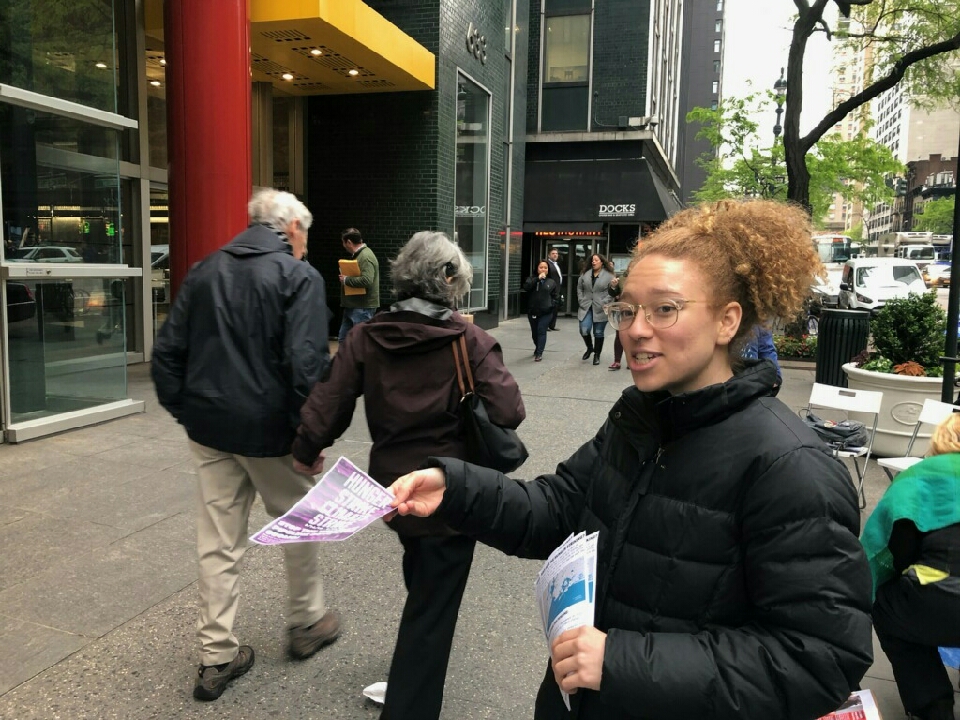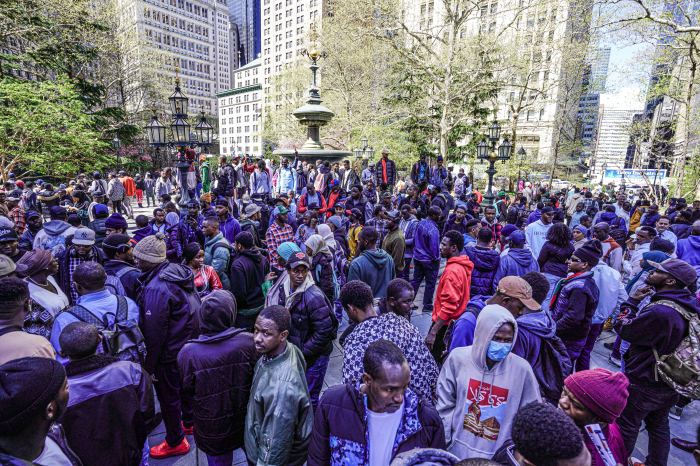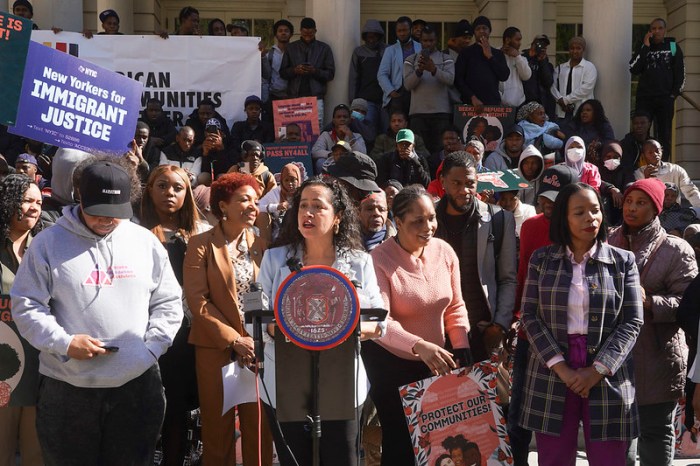BY ALEJANDRA O’CONNELL-DOMENECH | Last Tuesday, six women popped open blue, purple and pink umbrellas as they sat on the sidewalk on Third Ave. outside Governor Cuomo’s office as rain started to fall. They knew they were in for a long haul.
The group of climate activists gathered at the Midtown location on May 14 to participate in a three-day hunger strike to pressure Cuomo to block the Williams Pipeline. The 24-mile long pipeline would carry fracked gas from Pennsylvania shale fields across the lower bay of New York Harbor to heat homes in the outer boroughs and Long Island.

The activists fighting the plan succeeded. The next day, the governor’s administration blocked the pipeline. According to Politico, the Department of Environmental Conservation found that the Williams Pipeline, officially known as the Northeast Supply Enhancement project, would have significant environmental impacts on water quality.
But the battle is far from over for the activists. The day after the announcement, they rallied on the City Hall steps and also outside of 118th 10th Ave., where Cuomo had a private party with former and current staff members. The denial by D.E.C. was “without prejudice” meaning that Williams could reapply again.
Besides keeping their eye on the Williams Pipeline, activists plan to pressure Cuomo to pass the Climate and Community Protection Act. The act calls for a 50 percent reduction in greenhouse gas emissions by 2030 and for a 100 percent renewable energy economy by 2050. The goal of the governor’s “Green New Deal” is for the state’s electricity sector to use 70 percent renewable energy sources by 2030 and 100 percent by 2040.

But environmentalists say the plan is not aggressive enough. They note that climate scientists say that, in order to avoid catastrophic effects of climate change, greenhouse gas emissions must be reduced by 80 percent from 1990 levels by 2050.

“If New York passes good legislation, then other states will be brave enough to follow us,” said Claire Ullman, from Rise and Resist, one of the groups who were waiting for Cuomo on Tenth Ave. on May 15. Ullman hopes for a domino effect of state laws on climate change that ultimately would reach Washington.
“If we have good national legislation,” she said, “then the U.S.A. can finally step up and lead the world in confronting our global climate emergency.”

















